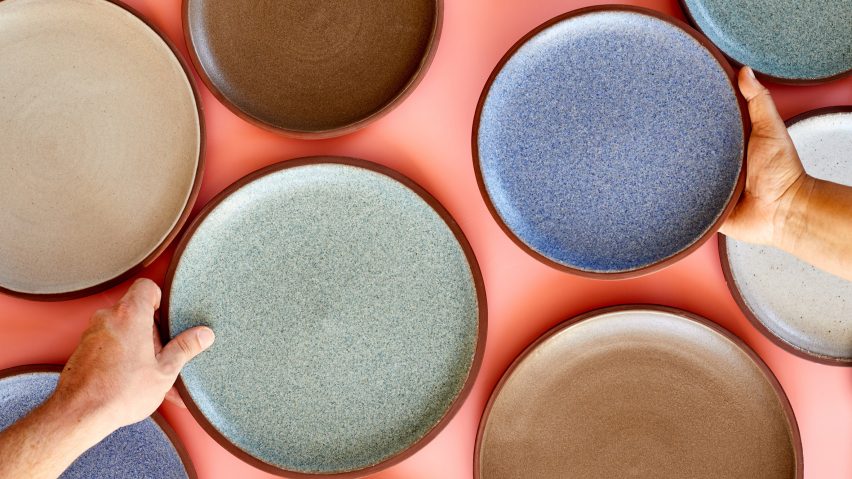
Granby Workshop recycles waste sludge from clay industries to make earthen tableware
Liverpool-based Granby Workshop has made a series of tableware products from the industrial and post-consumer clay waste that would otherwise be sent to landfill.
Comprised of a series of large and small plates, bowls and a mug, the new dinnerware forms Granby Workshop's core collection. The studio – a social enterprise set up by Turner Prize-winning architecture collective Assemble – plans to grow the collection in future years.
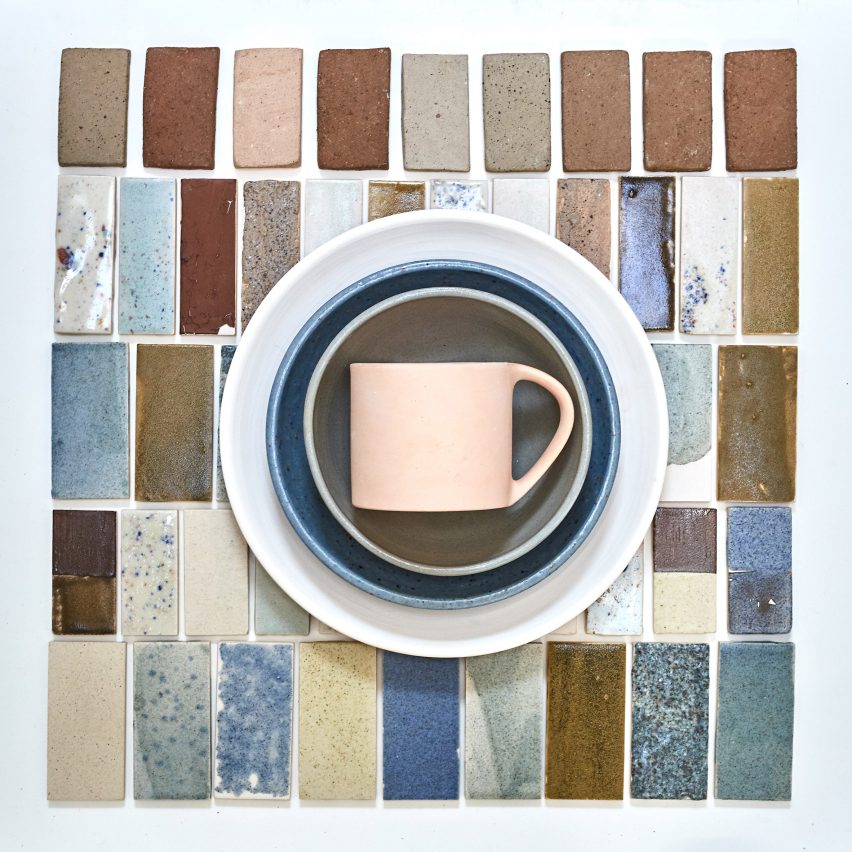
Granby Workshop used materials taken from industrial and post-consumer waste streams for both the clay and glaze recipes. The clay body mainly consists of a combination of industrial clay wastes from a range of producers.
"Basically before any water is returned to the mains from a factory producing tableware, bricks or any other ceramic products, it needs to be clean – so all the silty, sludgy, muddy residues are filtered out as a waste sludge," said Granby Workshop co-founder Lewis Jones.
"Most large producers do not re-use this waste and so it goes to landfill," he told Dezeen.
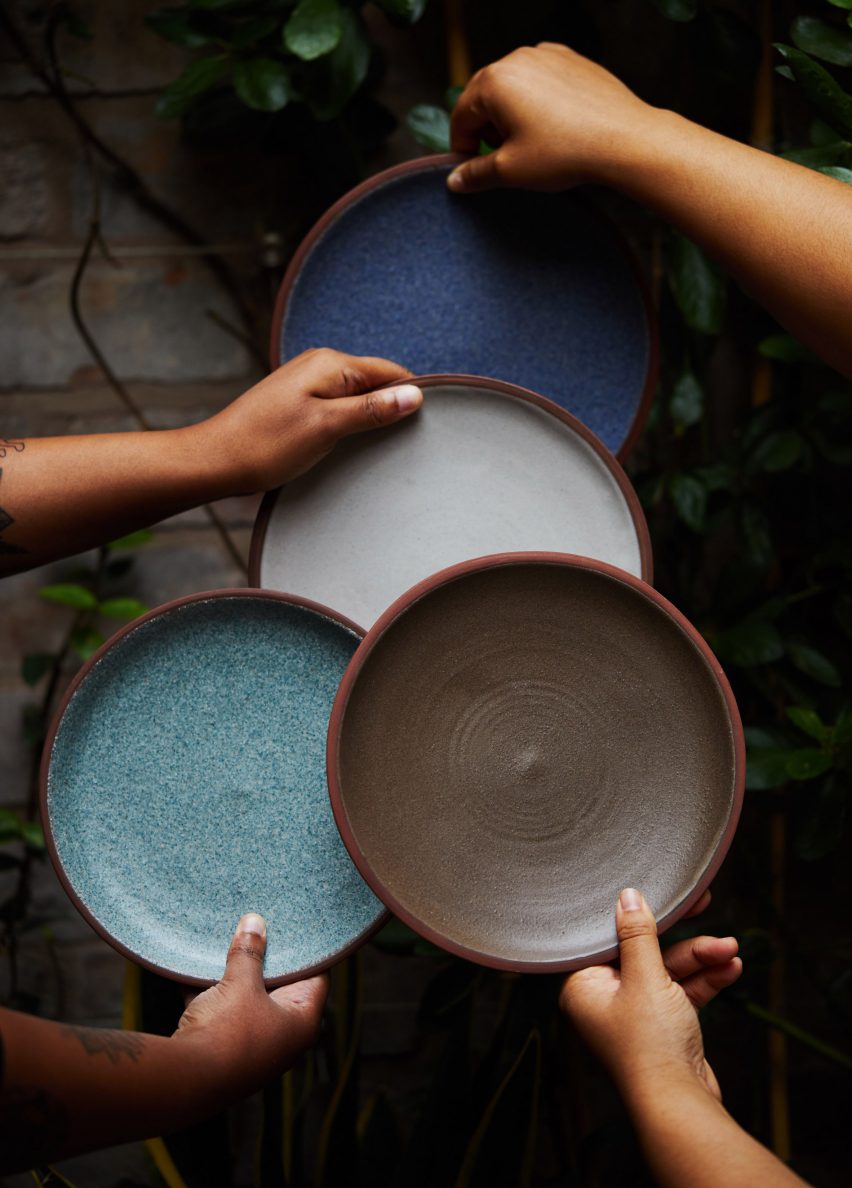
For the glazes, Granby Workshop used the clay waste along with crushed recycled glass, dust from slate, granite and marble quarrying, recycled, magnesia-rich refractory bricks and fired ceramic waste – such as broken plates, tiles, bricks and bowls – that are crushed into fine powders.
The glazes, made from a mixture of these materials, differ from normal glazes as they take their colouring from the various shades of crushed ceramics instead of pure stains, forming unique, speckled colours.
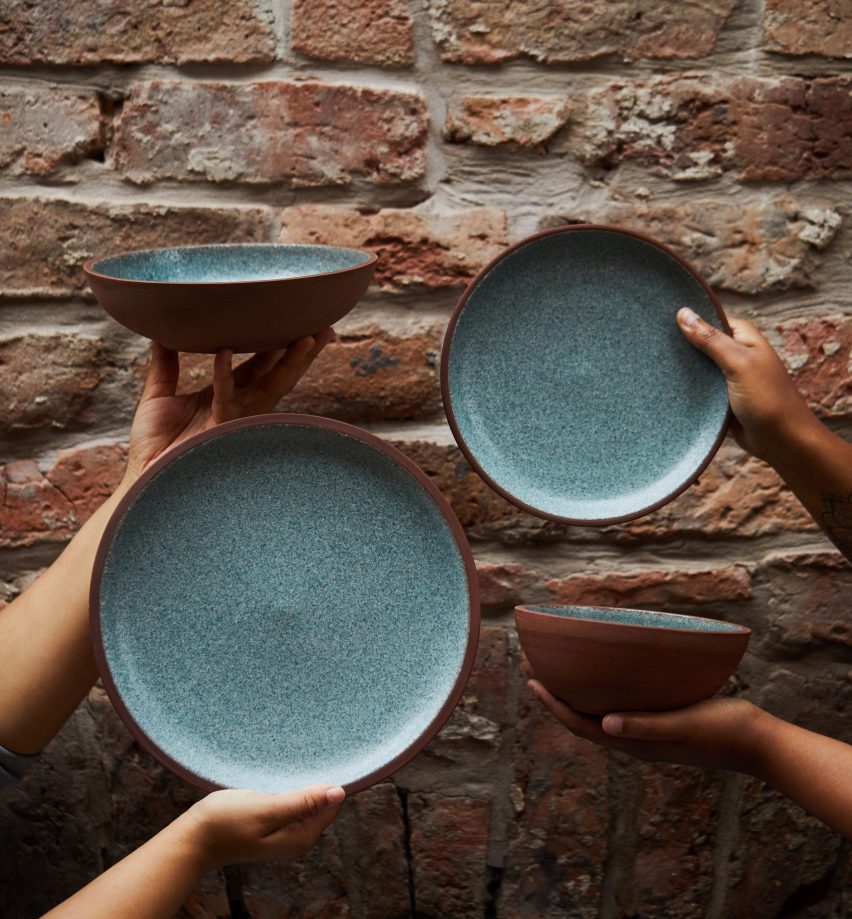
"On one hand, this project is about how we can re-think our process to reduce waste, but on the other it's about transforming how we see these waste materials and exploring what kind of beautiful and surprising surfaces, textures and finishes they can produce," said Jones.
"Ceramics is a fantastic process because it can encapsulate and bond together quite varied sources of materials and we can turn them into something extremely durable and hardwearing."
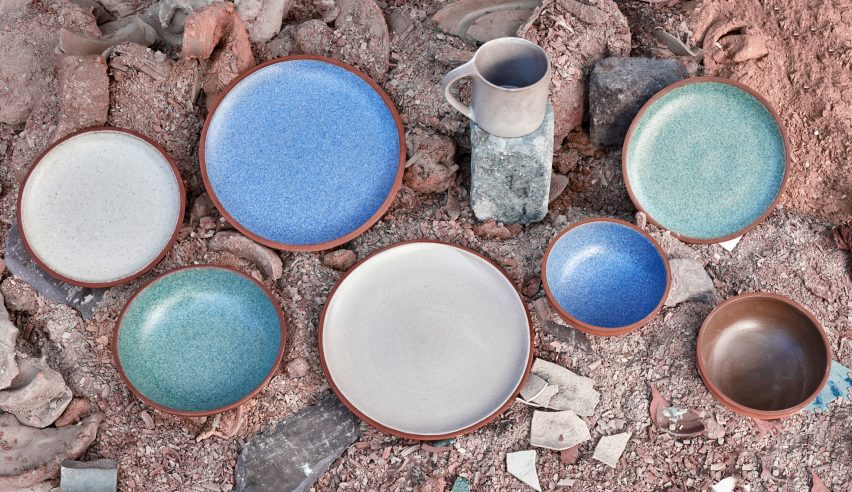
"There is a long history of inventive chemistry in ceramics - the development of bone china for example using ash from burnt cow bones, or London stock bricks which got their speckles from the inclusion of the ash from Victorian chimney grates," he continued.
"We think there is huge creative potential in this area – we've trialled hundreds of materials so far and there is some great stuff out there!"
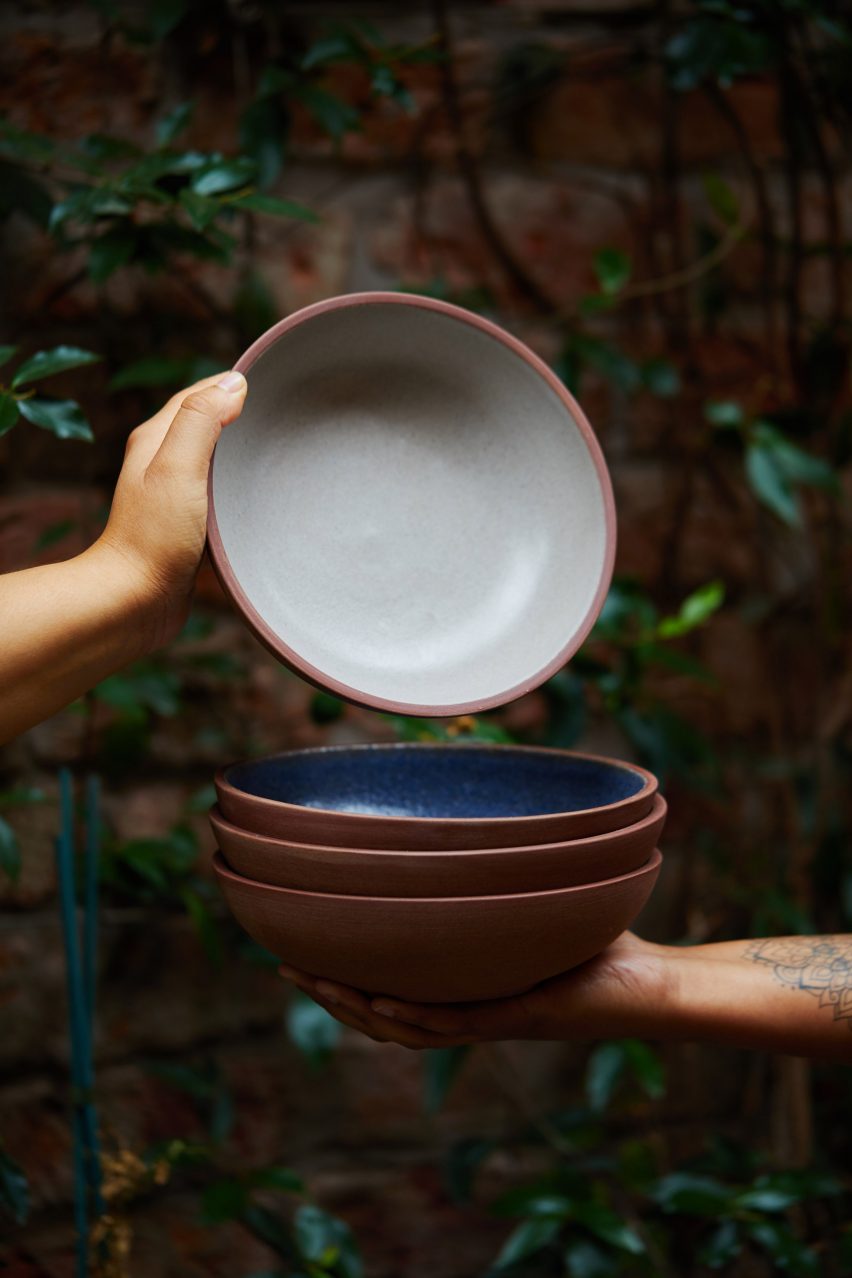
Although the ceramics are made from waste materials, they are manufactured in a very similar way to conventional ceramics. Plates and bowls are produced using a hydraulic press, while the mugs are slip-cast from a liquid clay.
Each piece is fired at a low temperature to harden the clay, before being dipped in glaze and then re-fired.

According to Jones, the project is all about the materials, so the designers chose very simple forms as to not detract from this.
Each of the exteriors are left unglazed to show the ceramics' natural texture, which is possible thanks to a clay recipe developed by the studio that vitrifies, making the pieces dishwasher safe despite being unglazed.
In contrast to this, the glaze is applied thickly to the interiors, causing all of the differently coloured speckles to build up, resulting in dense, deep hues.
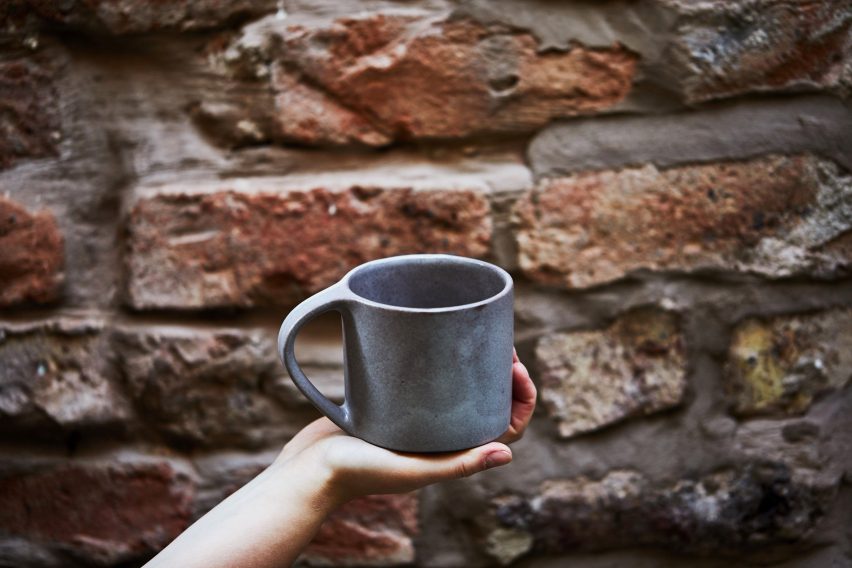
The new ceramic collection was released as part of this year's London Design Festival, where it was displayed at an installation and pop-up shop in Coal Drops Yard in King's Cross alongside examples of the wide-ranging tests and experiments that were carried out in the material developments.
The studio has also launched a Kickstarter project in a bid to raise £50,000, which would enable the production of the new range.
Granby Workshop has previously developed a method for producing tableware items that are unique every time, to "avoid the monotony of batch production".
The Splatware collection includes a range of marbled ceramics that are made by combining different coloured clays that have been sprayed with ceramic oxides and pressed using an industrial RAM Press.